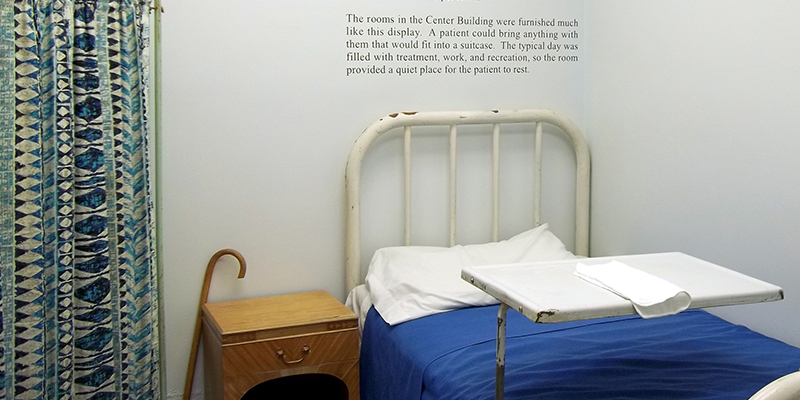BLOG
Museum of the Moment: Glore Psychiatric Museum

Informative yet unsettling, the Glore Psychiatric Museum in St. Joseph, MO, chronicles the history of mental health treatment in the United States. Exhibits displaying artwork, medical instruments, patient rooms and more illustrate the progress that’s been made in the last 145 years—and prove that Glore deserves its recognition as one of the most unusual museums in the country.
The History

Established in 1874, the State Lunatic Asylum No. 2 operated just 40 minutes northwest of Kansas City, in St. Joseph, MO. The institution opened its doors with 250 initial patients.
Post-Civil War America was still a relatively primitive time for medical treatment. Many Americans relied on family for their healthcare services—or, in other cases, doctors who made house calls, if their services could be afforded. If, however, family members grew weary of treating individuals with certain conditions, they would often commit these patients to asylums.
Treatments were unsophisticated to say the least. Ice water baths, upright coffins for calming patients down and other such instruments allude to just how scarring mental health therapies were and could be.
It was George Glore who first brought attention to this history in the region. In 1968, the St. Joseph State Hospital employee constructed life-size replicas of many 17th, 18th and 19th century devices that were used on patients in the past, all to be displayed during a Mental Health Awareness Week open house. The exhibits made a big impression on hospital officials, and the Glore Psychiatric Museum was born soon thereafter.
The Museum

The museum now stands adjacent to the original building, which was converted to a correctional facility in the 1990s after the asylum closed.
Visitors are invited to see first-hand many of the replicas that Glore constructed in 1968. The displays, which reveal many of the crude treatments offered to mental health patients dating back to the 1600s, including the “Bath of Surprise” and the “Tranquilizer Chair.”
With that said, the museum isn’t all gloom. Artwork such as pottery, drawings, paintings and more offer guests a peek into the everyday lives of former patients, particularly how they once expressed themselves. This glimpse of humanity shows how far mental health treatment has come over the years—and just how vital the museum is for helping us understand the importance of this transformation.